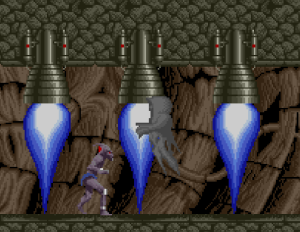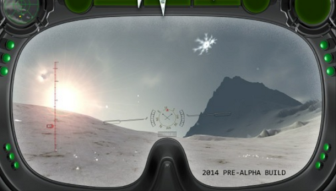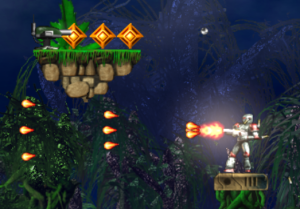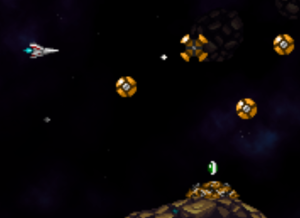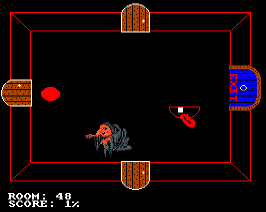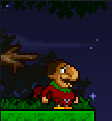Oh, Shadow of the Beast. You’ll read on half a dozen videogame nostalgia sites that it’s a “classic” and although I think that it’s fair to say it’s remembered fondly it’s really got nothing to do with the games in the series being good.
Shadow of the Beast and to some extent its two sequels is an example from an earlier era of the phenomenon of the “shop-front game”; the title that was left running on a monitor in attract mode in the window in order to get people to come into the shop and buy the game and, crucially, the machine it was running on (in this case the then-new Commodore Amiga). Beast, even to this day, looks and sounds gorgeous. It’s just a shame that the gameplay is so utterly flawed.
The first title in the series is a game that wanted to be an epic arcade-adventure set in a huge, open fantasy world; that’s very much what it’s clearly trying to be when you start playing. The player character can run either left or right and explore the environment the player has found themselves in which is full of forests, monsters and traps. After a bit of experimentation, though, it becomes clear that there’s only one way you can go in order to get anywhere in the game. And once you get there you’ll quickly discover that it’s like this all the way – run around, find the right swtich, find the right key, keep progressing until you reach a locked door because you didn’t get a key or flip a switch you missed half an hour ago. Gah!
Shadow of the Beast 2 upped the Arcade Adventure aspect and again presented an apparent open world whilst being just as linear and about twice as difficult as its predecessor. The sequel added much more interaction and plot to proceedings and was notorious for featuring a few puzzles which, if not completed correctly, left the player stranded necessitating a restart.
Shadow of the Beast 3 is considered by many to be the best of the bunch introducing levels (which can be played in any order) rather than a fraudulent open world, lives rather than a single energy bar, and some sometimes genuinely brilliant puzzles – more numerous and better than those in Beast 2 – which bring to mind those which appear in the indie arcade adventure LIMBO. Unfortunately, though, unlike LIMBO which allows checkpoints and endless lives to give the player multiple chances to experiment and complete puzzles, messing the puzzle up in Beast 3 means losing a life before you can try it again. Harsh.
So, a pretty and iconic series of videogames, but at the same time bloody infuriating and badly designed. Does this still sound appealing? Then you’ll be delighted to know that a number of enthusiasts are working on porting Shadow of the Beast and its sequels to modern platforms. They’ve attempted to improve gameplay with continues and the ability to save (the latter of which isn’t properly implemented); and only the first game is actually properly playable and completable. Regardless of their legendary flaws there remains something attractive about the Beast games and I’ll admit to sitting down and playing them again for a while and feeling the need to return. Maybe, despite their obviously flawed design, these were games that really do have that special “something” that makes people come back, even 25 years later. Or maybe, y’know, it’s just nostalgia and we all need someone to say “Dad, this game’s rubbish.”
(And if you don’t understand the title of this post then I’m now going to tell you. Ner.)
